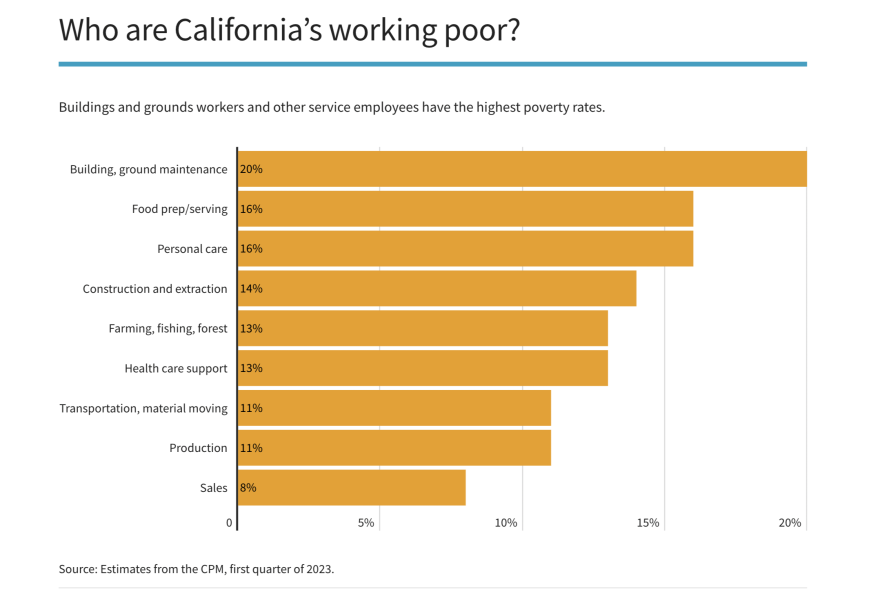California’s poverty rate climbed in the first quarter of 2023, the latest quarter measured by the Public Policy Institute of California. Poverty increased from 11.7% in 2021 to 13.2%, the institute said, with 5 million people living in poverty.
Safety net programs played a major role in recent shifts in the state’s poverty rate.
During the pandemic, the federal government expanded such social safety net programs as tax credits for families with children and emergency food assistance, which lowered poverty rates nationwide. Poverty rates jumped when those expansions expired late last year and earlier this year, said Caroline Danielson, a researcher at the institute.
“We’re seeing an uptick in poverty. That’s not because the economy is worse– it’s actually improving— but it’s because we temporarily, using federal funds mainly, had expansions of safety net programs,” she said.
About 3.2 million more Californians would be in poverty without any safety net programs, Danielson said. Expanded CalFresh food assistance alone kept 1.1 million people out of poverty in the first quarter of 2023, when that expansion expired, the report said.
Latinos make up about half of Californians living in poverty, despite being 39.7% of the population. By comparison, about 10% of white Californians live in poverty.
Child poverty leaped from 9% in 2021 to about 14% in early 2023, largely due to the expiration of social safety net expansions. In 2019, the child poverty rate was about 18%.
Senior Californians also experienced a higher poverty rate at 15%, compared to about 13% for adults ages 18 to 64.
Poverty and high living costs
Poverty rates also varied significantly by region, with San Diego and Los Angeles counties experiencing the highest poverty rates, about 15%, while the Central Valley and Sierra counties experienced the lowest, about 11%.
A big reason for that, Danielson said, is the high cost of living in Southern California counties and demographic differences among the regions. Los Angeles and San Diego counties have high populations of Latino and immigrant communities that experience higher rates of poverty.

The Public Policy Institute’s California Poverty Measure includes such things as the value of government assistance and a region’s cost of living, which the federal poverty rate does not consider.
Social safety net programs make less of a dent on poverty in counties with higher costs of living. That’s because poor Californians in these counties may earn incomes too high for federal poverty thresholds and so don’t qualify for as much aid.
For example, researchers found that social safety net programs reduced poverty the most in inland areas, where poverty rates are lower. Without the programs, poverty would be 14.4 points higher in the Central Valley and Sierra region, but only 4.3 points higher in the Bay Area, the report shows.
The Public Policy Institute looked closer at working Californians and found that most Californians in poverty are working and even full-time employment didn’t keep some residents from poverty.
More than 8 in 10 of California’s 1.3 million working poor were employed year-round; nearly half worked full time and 37% part time. Part-time workers had higher poverty rates than full-time workers.

Workers in service industries — janitors, landscapers, cosmetologists, housekeepers and other service jobs — and workers in agriculture tended to experience poverty at higher rates than other labor sectors. People in building and grounds maintenance, for example, have a 20% poverty rate, followed by workers in food preparation and service who endure a 16% poverty rate.
The report also highlights how the working poor spend their money. They cohabit with family members to make ends meet; 82% of Californians in poverty live with other adult family members.
People use most of their earnings for everyday expenses and bills. On average, working poor adults make $28,000 annually.
Danielson said this underscores the need for policies that increase wages and improve training and educational opportunities for the working poor.
CalMatters is a nonprofit, nonpartisan media venture explaining California policies and politics.


